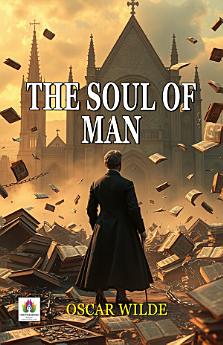The Soul of Man
About this ebook
Wilde's central thesis posits that art should not be constrained by societal norms or rigid moral judgments. Instead, he argues, it serves a higher purpose: to illuminate the depths of the human soul. The artist, according to Wilde, is a mirror reflecting the myriad complexities of existence, revealing truths that are often obscured by conventional morality. This notion resonates with readers who seek to understand their own identities and values beyond the limitations imposed by society.
Throughout the essay, Wilde weaves together philosophical insights and vivid illustrations, showcasing his remarkable wit and intellectual prowess. His writing is not only a critique of societal hypocrisy but also an invitation for readers to embrace their individuality and seek personal truths through artistic expression. With graceful language and thought-provoking arguments, Wilde captures readers' imaginations, compelling them to contemplate the transformative power of art in their lives.
Moreover, Wilde delves into the emotional depth of the human experience, exploring themes of love, desire, and the pursuit of beauty. His reflections on these subjects resonate universally, prompting readers to contemplate their own emotions and relationships with art and society. In The Soul of Man, Wilde adeptly bridges the gap between art and life, illustrating how creativity can be a powerful tool for self-discovery and personal liberation.
Ultimately, The Soul of Man stands as a testament to Wilde's enduring legacy as a writer and thinker. His visionary ideas about the nature of art and its significance in the exploration of the human condition continue to inspire and challenge readers to this day. In an age where the boundaries between art and morality are still debated, Wilde's insights remain relevant, encouraging a deeper appreciation for the intricate dance between beauty, truth, and personal freedom. Readers from all walks of life will find this essay both enlightening and enriching, as it invites them to experience the world anew through the lens of art.







